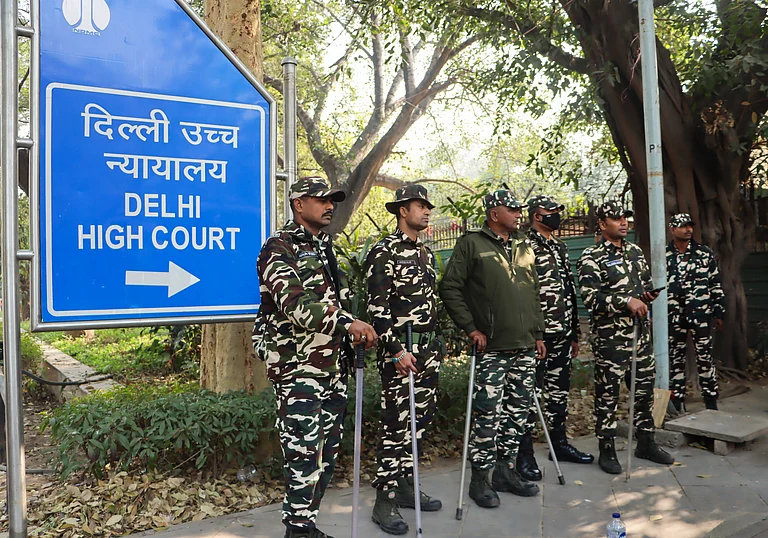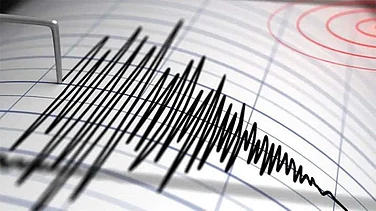The Supreme Court has marked the 50 years of Kesavananda Bharati judgement with a webpage on its website and a short documentary.
While the webpage contains background, arguments, and documents related to the Kesavananda Bharati case, the documentary is a commentary on it. It calls the case "the most important case in the history of India".
In 1973, a 13-judge bench of the Supreme Court in the Kesavananda Bharati case ruled that the Parliament's power to amend the Constitution is not unlimited. The SC introduced the concept of Basic Structure Doctrine that meant that the Parliament could not amend certain provisions of the Constitution that comprised its basic features.
Here we explain what the Kesavananda Bharati case was, what led to it, and why it is so important in Indian history.
What led to Kesavananda Bharati case?
The Kesavananda Bharati judgement came in the case formally known as His Holiness Kesavananda Bharati Sripadagalvaru and Ors. Vs. State of Kerala and Anr.
It was filed by Kesavananda Bharati, the then-chief of the Hindu religions institution Edneer Mutt. The case was filed against the laws introduced by the then-Kerala government that limited the size of the land that religious institutions could hold.
"In 1970, the Government of Kerala imposed restrictions on the ownership of land held by religious institutions. The Edneer Mutt, headed by Sri Kesavananda Bharati, challenged the constitutionality of the Act in the Kerala High Court. The case eventually reached the Supreme Court, which ruled in favour of the state government," says the Supreme Court website.
This restrictive law was part of the ongoing 'land reforms' under which the state redistributed the land from large landholders to the poorer people.
Three constitutional amendments passed in that period also led to the filing of the case, namely 24th, 25th, and 29th amendments.
"The Parliament of India in the meantime passed the 24th Amendment to the Constitution, which sought to curtail the powers of the judiciary and limit the scope of judicial review. The 25th and 29th Amendments were also passed, which sought to limit the fundamental rights of citizens and give Parliament the power to amend any part of the Constitution. Sri Kesavananda Bharati filed a petition challenging the validity of these amendments, arguing that they violated the basic structure of the Constitution," says the Supreme Court website.
It is this line of argument by Kesavananda Bharati that led to the judement that has since come to be known by his name.
What was in the Kesavananda Bharati verdict?
The Kesavananda Bharati case had three major constitutional and legal issues to be decided by the Supreme Court:
- Constitutional validity of the Kerala Land Reforms Act
- The extent to which the Parliament could amend the Constitution
- The Basic Structure Doctrine of the Constitution
The enormity of the Kesavananda Bharati case can be understood by two facts:
- Its hearings went on for 68 days, perhaps the longest time ever in Indian history
- It had the 13-judge Constitution bench — largset bench in Supreme Court's history
In its 7:6 judgement, the Supreme Court ruled that there indeed exists Basic Structure Doctrine and the Parliament's power to amend the Constitution is therefore limited. In his battle over the Legislature's perceived excesses, Kesavananda Bharati thus prevailed.
The importance of Kesavananda Bharati judgement
As the Kesavananda Bharati judgement imposes limits on the powers of the Parliament, it's considered to be a landmark judgement securing India's democratic credentials and also asserting independence of the Judiciary. The judgement has since shaped Indian Judiciary's approach to constitutional matters.
The Supreme Court website says, "The Kesavananda Bharati case has been hailed as a landmark in the history of Indian constitutional law as it affirmed the supremacy of the Constitution and the independence of the judiciary in protecting the basic structure of the Constitution. The judgment laid down several principles that have become the bedrock of constitutional law in India. These include the principles of the rule of law, separation of powers, and the independence of the judiciary.
"It has also been instrumental in shaping the Indian judiciary's approach to constitutional interpretation and the limits of Parliament's power to amend the Constitution."
Supreme Court lawyer Vivek Sood notes in an article for Outlook that the Kesavananda Bharati judgement is the shield that guards Indians against absolutism and majoriatarianism of the Executive and Legislature.
"We the people of India could not have got a stronger kavach against absolutism by the majoritarian Congress regime then and future governments. This concept of ‘basic structure’ or ‘basic features’ of the constitution speaks of the highest level of judicial statesmanship of the majority judges," notes Sood, adding that 24 April —the date the judgement was passed in 1973— is as consequential as 26 January that marks the Republic Day.
He further writes, "Chief Justice SM Sikri said that every provision of the Constitution can be amended, provided in the result the basic foundation and structure of the Constitution remain the same. The basic structure consists of supremacy of the Constitution; republican and democratic form of government; secular character of the Constitution; separation of powers between the Legislature, the Executive and the Judiciary; federal character of the Constitution.
"Justices Shelat and Grover said that the basic structure of the constitution is not a vague concept and that they could not be catalogued but only be illustrated. In addition to the above basic features, they said that the dignity of the individual secured by the freedoms and basic rights in Part III and the mandate to build a welfare state contained in Part IV of the Constitution were also part of the basic structure."


























